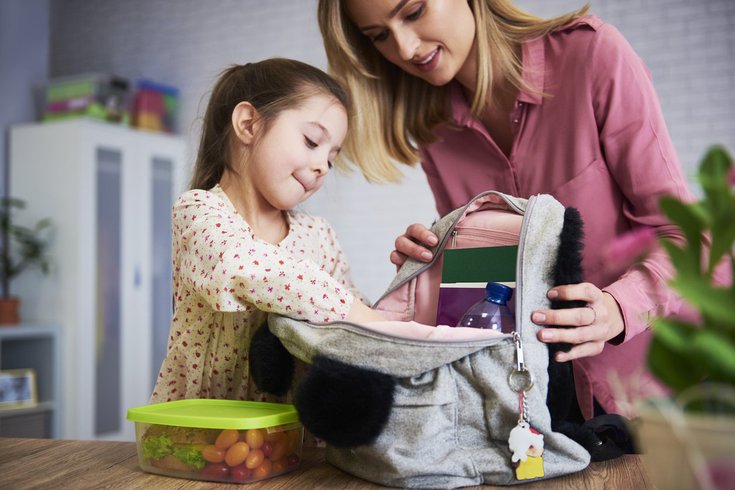
September 06, 2022
 gpointstudio/istock.com
gpointstudio/istock.com
According to the University of California, Davis, between 35% and 40% of a child's daily calories are consumed while at school, so it is important that those calories are healthy ones.
It's that time of year again. Kids are heading back to the classroom and family schedules are about to become busy after a relaxing summer. One of the biggest challenges many parents face each school year is packing healthy lunches they know their child will eat.
Between 35% and 40% of a child's daily calories are consumed while at school, according to the University of California, Davis. It's important those calories come from a nutritious source, because children need a healthy diet for proper growth and development, as well as to protect against infection and chronic health conditions.
The percentage of children and adolescents who are obese has more than tripled since the 1970s, with almost one-fifth being affected. Children who are obese are at higher risk for major health conditions such as diabetes, asthma, heart disease and high blood pressure. They also are more likely to be obese as an adult.
If you're having a hard time getting your kids to eat a nutritious lunch, try some of these expert tips for how to make them more fun and healthy – even when you're in a hurry.
When you're rushing around in the morning trying to get everyone out of the door, there isn't much time to get creative with school lunches. If you're lucky, you have just enough time to throw together a sandwich and add a piece of fruit and a snack. This can get boring day after day for your child, though. Try to set aside time on the weekend to plan out the lunches and do some of the prep work, like cutting up fruits and vegetables, says Jennifer Hyland, a registered dietitian at the Cleveland Clinic.
Children are more likely to eat their packed lunch if they feel like they had a choice on what's on the menu. Discuss what their options are at the beginning of the week and help them choose a variety of healthy meal combinations they will enjoy. Pediatricians also say this teaches them how to compromise and sharpens their decision-making skills.
If your children are old enough to pack their own lunches, keep the pantry stocked with healthy staples and leave a list of lunch options on the refrigerator that they can choose from.
Mackenzie Coffin, MD, a pediatrician at Scripps Clinic Carmel Valley, says a balanced lunch should include all five food groups – grains; vegetables; fruit; meats, poultry, fish, dry beans, eggs and nuts; and dairy.
Examples of healthy, easy to pack choices include: sliced chicken breast, cheese cubes or string cheese, mixed seeds or nuts, hummus, plain yogurt, hard boiled eggs, low-fat granola, whole-wheat crackers, pita bread, a small tortilla, grapes, apple slices, banana, baby carrots, and sliced cucumbers or bell pepper strips. For a beverage, Hyland advises sticking to water or low-fat, unflavored milk.
The goal is to have variety, color and to include at least three of the five food groups at each meal. Small servings of healthy snack foods can even be turned into a quick meal. A small serving of cottage cheese with fruit, nuts, trail mix or sliced vegetables can make a simple, but filling lunch.
You should also ensure that your child's lunch is packed with protein, which is essential for strengthening bones, teeth and skin, as well as for the transportation of nutrients to cells. A lunch filled with more proteins than carbohydrates will also keep your child feeling full longer, which can improve their concentration in class.
Registered dietitians from Harvard Health add that the presentation of a packed lunch can help boost a child's excitement to eat it. For example, instead of a sandwich, send your child in with kabobs. Simply cut some fruits, vegetables and protein into cubes or small balls and insert them onto a skewer for a more fun dining experience.
Kids also love themed lunches. One day could be Mexican-themed with beans and brown rice with whole grain tortilla chips and homemade guacamole or salsa, and another could be "Eat a Rainbow" day, where all their lunch items are a different color. Younger children especially love their food cut up into fun shapes. Using mini cookie cutters can transform sandwiches and fruits into different shapes, such as hearts and stars.
Buying a lunch box, like bento boxes, where there are several divided containers also can encourage more variety of healthy foods at lunch time.
What if you need to rely on lunch provided by your child's school? Most schools are now required to provide healthy lunch options in the cafeteria. The Philadelphia Public School District has a team of registered dietitians plan out school meals in accordance with federal regulations and participates in the National School Lunch and Breakfast programs.
To help your children choose the healthiest options in the cafeteria, review the school's weekly lunch menu with them and discuss what options would ensure a balanced meal.